Patterns are an important part of learning mathematics for young children. By providing a variety of activities for teaching patterns to preschoolers, you can help them develop the skills they need for future success in math. Here are five simple ideas to get you started.
All About Preschool Pattern Activities
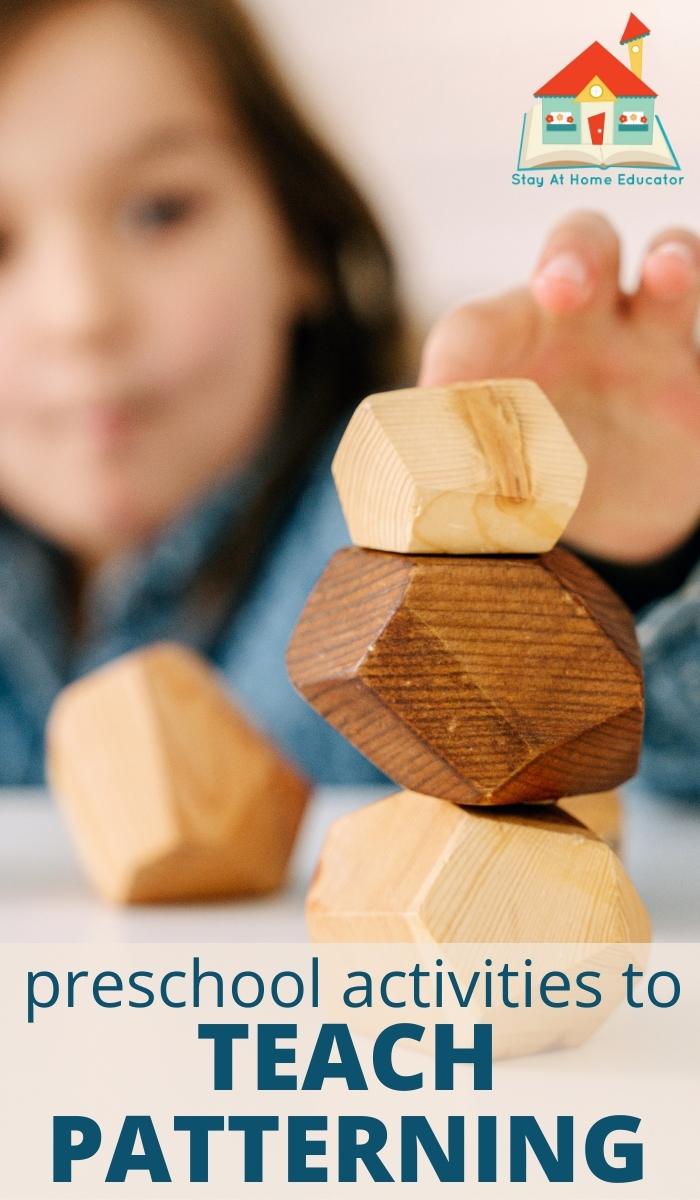
Preschoolers typically get a lot of exposure to patterning.
In my preschool, we make patterns when doing calendar time, we practice patterns on our math concept board, and we play pattern games when transitioning from one activity to the next.
In my home, my children are constantly making patterns with their toys, or saying patterns aloud.
Introducing patterning to preschoolers comes easily, but what are some ways to make patterning activities for challenging for those preschoolers who need it? This post is all about the variety of ways to teach patterns, including what you might find in my pattern lesson plans for preschoolers.
FAQ About Teaching Patterns in Kindergarten and Preschool
Patterns can be anything that repeats in a logical way. For example, vertical stripes on someone’s sweater create a pattern. Patterns can be made up of anything, including numbers, images or shapes, as long as they follow a the ultimate patterning rule: that it is repetitive!
Learn all about patterning in this post: The Ultimate Guide to Teaching Positions and Patterns.
Patterns range in complexity, so in preschool and kindergarten, you’ll find the most success if you start with simple patterns and work your way up to longer, more complex patterns. Here is a good order to go by:
~ AB
~ ABC
~ AABB
~ AAB
~ ABB
These patterns are all practiced in my Daily Lessons in Positions and Patterns Math Unit.
There are many different levels to teaching and learning pattern skills, here’s the developmental sequence for teaching patterning skills to your Preschool or Pre-K students.
~ Stage 1: Recognize a pattern
~ Stage 2: Describe a pattern
~ Stage 3: Copy a pattern
~ Stage 4: Extend a pattern
~ Stage 5: Create a pattern
I would so add that a sixth stage could be created: Filling in a missing pattern pieces.
Related Reading
Why is Teaching Patterning to Preschoolers Important?
Children love to find patterns in the world around them and patterns in nature, as they are abundant. Not only are they pleasing to the eye, but patterns serve an important role in developing mathematical skills in preschoolers.
Patterning is part of the algebraic discipline in math, which is all about identifying relationships and functions. Here are some ways preschool pattern activities can benefit your little learner.
Patterns help children…
- understand change and how things happen over time
- make mathematical predications
- make logical connections
- increase problem solving and reasoning skills
Tips for Teaching Patterns to Preschoolers
Do not underestimate what a child is capable of learning in all academic areas including math. Even toddlers are capable of learning simple patterns.
There are a lot of ways to incorporate patterns into your daily activities with young children. Try some of these patterning ideas.
- Read books and sing songs that are repetitive.
- Keep a consistent routine.
- First we wash our hands, then we have our snack. After snack we clean up our space at the table.
- Make descriptive observations while teaching.
- I put the blocks in the bucket, you dump them out. I put them in, you dump them out.
How Math Talk Increases Mathematical Understanding
Talking about math — in this case patterns — will also help preschoolers gain a better grasp of the intricacies of patterns and the different types. Talking about patterns, even making blanket statements and observations, will help preschoolers make more connections in mathematics.
Research has shown that math talk supports learning by:
- improving memory and understanding
- aids in the development of language
- increases social skills
- boosts confidence and interest in math
So as a teacher, it’s important to point out patterns and draw your student’s attention to them. “Collins, you’re wearing a striped shirt. The stripes make a pattern. It’s red, white, red, white…”
For more information about using math talk in the preschool classroom, check out this article.
Simple Pattern Activities for Preschool & Kindergarten
Here are a few quick and easy pattern activities you can do with your preschoolers in a moment’s notice.
Start with Color Patterns
Visually, color patterns are the easiest for young children to recognize, so it’s a good place to start. With color patterns, preschoolers can practice recognizing, reading, and copying patterns, like in the following pattern cards.
More advanced preschoolers, or kindergarten students, can also practice filling in the missing pieces of a pattern.
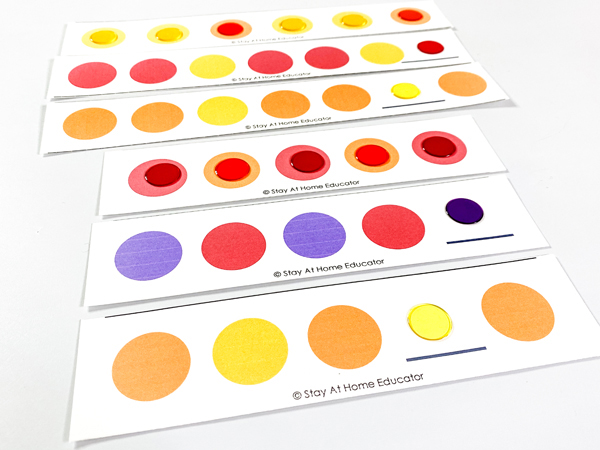
Use Colored Manipulatives
Using rainbow colored manipulatives like counting bears, transparent counters, or even pattern blocks is by far the easiest way to get children started in learning about patterns. With manipulatives, children can experiment with creating their own patterns, as well as completing patterning, or continuing and extending existing patterns.
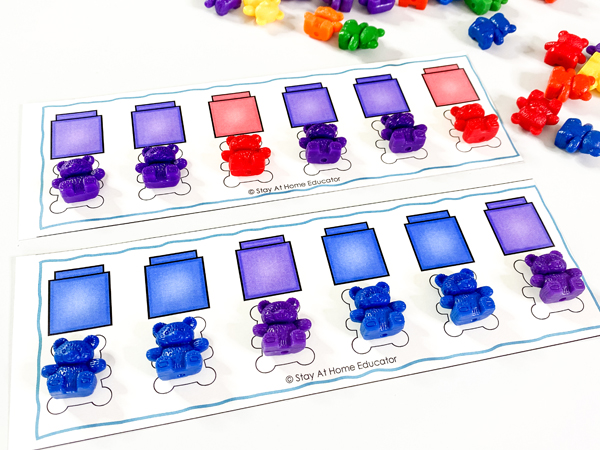
Use Sensory Toys Whenever Possible
Preschoolers can always benefit from more sensory activities, so break out the playdough or the dyed rice to make learning patterns even more fun.
One St. Patrick’s Day, I offered my preschoolers two colors of rice in a sensory bin. Their task was to scoop and pour rice in patterns into carafes.
Another idea is to use playdough to make patterns.
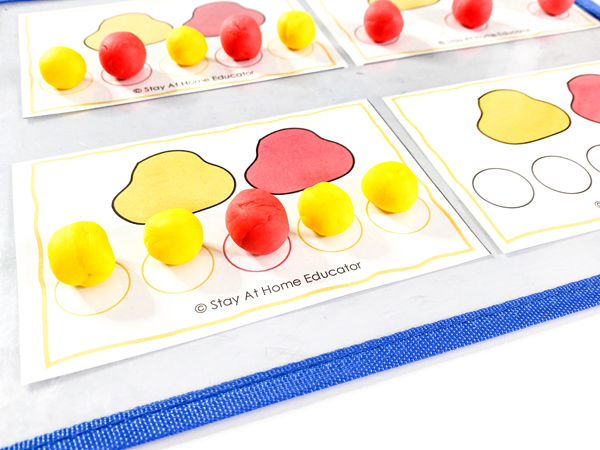
Add in Some Gross Motor Activities
Preschools have loads of fun making patterns that are based in gross motor movements. They can “clap, stomp, clap” or “jump, sit, jump” if you need to teach patterning skills when they are extra wiggly. We like to use Gross Motor Pattern Cards and Yoga Pattern Cards in our math center.
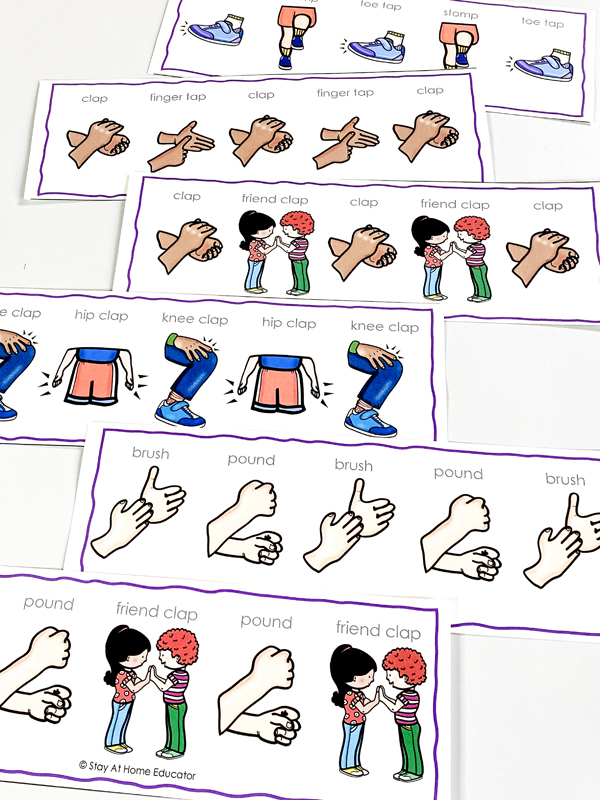
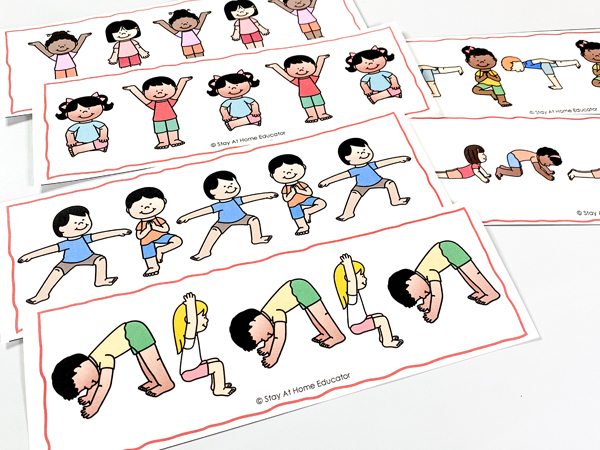
Get Pattern Lesson Plans for Preschoolers
If you’ve read my Ultimate Guide to Teaching Positions & Patterns to Preschoolers, then you know that like anything else in mathematics, lessons should be deliberately designed and taught in a specific sequence.
My Daily Lessons in Positions and Patterns takes the guesswork out of teaching.
POSITIONS & PATTERNS UNIT INCLUDES:
- yearly scope and sequence
- daily learning routines
- weekly discovery concept prompts
- targeted, skill-based learning activities
- integrated literacy activities
- weekly printable math centers
- teaching tips
- bonus activities
More Tips on How to Teach Patterns to Preschoolers

I’m Sarah, an educator turned stay-at-home-mama of five! I’m the owner and creator of Stay At Home Educator, a website about intentional teaching and purposeful learning in the early childhood years. I’ve taught a range of levels, from preschool to college and a little bit of everything in between. Right now my focus is teaching my children and running a preschool from my home. Credentials include: Bachelors in Art, Masters in Curriculum and Instruction.
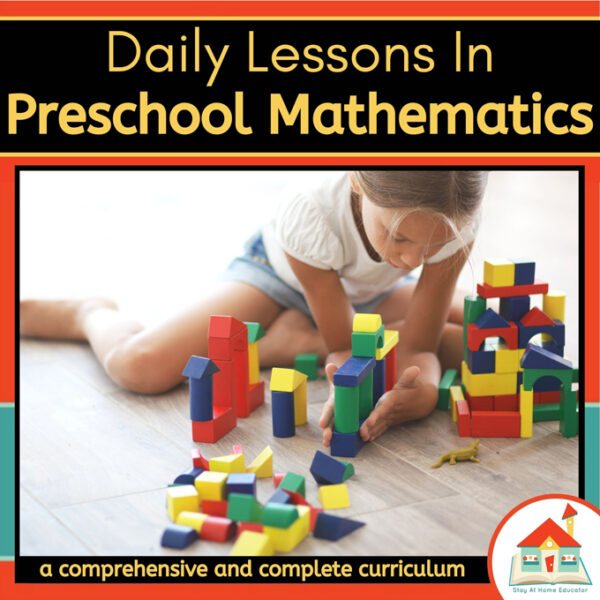
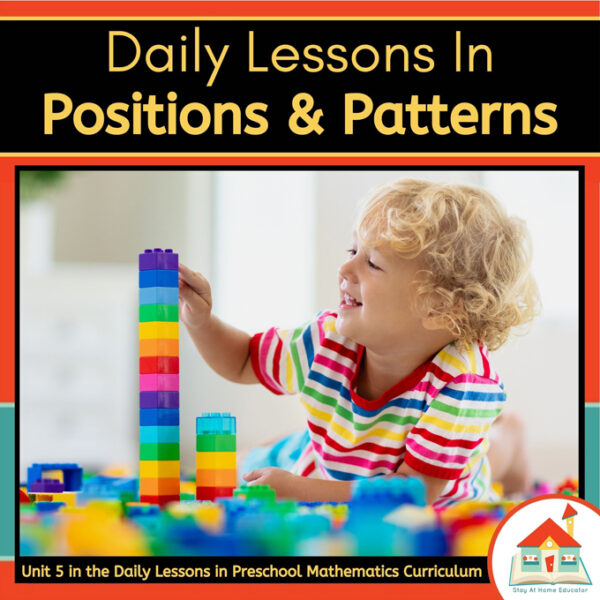

Nice and very useful. THANKS!!!